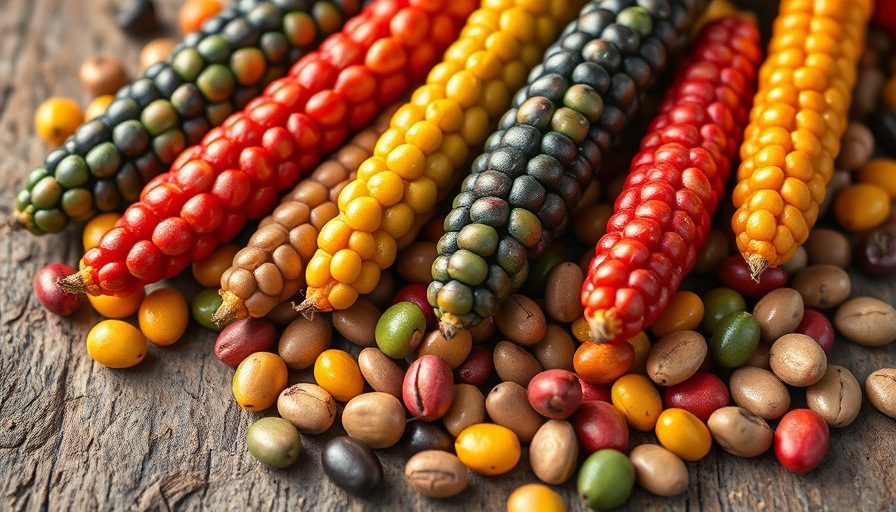
Why Choose Pinto Beans for Your Garden?
Pinto beans are not only nutritious but also an excellent addition to any garden. Known for their rich flavor and versatility, they rank among the most appreciated dry beans globally. Whether you're interested in heirloom varieties that boast cultural significance or looking to stabilize your pantry with reliable storage crops, pinto beans hold immense value. They offer high amounts of fiber, protein, and essential nutrients while being low in cholesterol, making them a heart-healthy choice for meals year-round.
Ideal Growing Conditions for Pinto Beans
Pinto beans flourish in the warm embrace of summer, preferring temperatures between 80°F and 90°F during the day and no lower than 65°F at night. Planting them 4 to 6 weeks after your last frost ensures that they will thrive. To ensure a successful yield, check your soil temperature using a soil thermometer; it should consistently be at least 60°F. A location that receives 8 hours of direct sunlight is crucial for their growth, alongside proper soil composition. Their growth can be significantly boosted by mixing compost into the soil before planting, enriching it with organics that help nourish the plants.
Unlocking the Secrets: Planting Techniques
To cultivate pinto beans effectively, sowing techniques matter. They can be planted in rows directly in garden beds, raised gardens, or even containers, making them adaptable for homeowners with different space configurations. If you're in an area with soil challenges or a shorter growing season, consider raised beds or mulching to keep the soil warm and to hasten growth. The right sowing depth is critical—plant the seeds about 1 inch deep and space them approximately 2 to 4 inches apart.
Harvesting: The Reward of Your Labor
After nurturing your pinto beans, it’s time for the satisfying part: harvesting. Once the pods change color and dry out on the plants, it’s your green light to collect them. Be watchful, as this usually happens late in the growing season, often around 90 to 120 days after planting, depending on the variety. Harvesting during the drier parts of the day can minimize moisture and ensure better preservation.
Exploring the Ecosystem: The Role of Pinto Beans in Crop Rotation
Incorporating pinto beans into your crop rotation plan is beneficial for your garden’s health. As legumes, they have the unique ability to fix nitrogen in the soil—an essential nutrient that helps subsequent crops. By planting pinto beans, you reduce the need for synthetic fertilizers in the following planting seasons, ultimately promoting soil health and sustainability.
Challenges and Troubleshooting Tips
While growing pinto beans can be rewarding, it’s not without its challenges. Be mindful of pests such as aphids and spider mites, which can impact your crop. Regular monitoring, alongside organic pest control methods, can help discourage these intruders. Additionally, ensuring proper spacing for air circulation and reducing soil compaction around the roots can mitigate diseases, ensuring your bean plants remain healthy throughout their growth cycle.
The Benefits of Home Gardening with Pinto Beans
Growing pinto beans at home provides not only fresh ingredients for your kitchen but also a rewarding gardening experience. They help introduce kids to the joys of gardening, making them an engaging and educational choice for family activities. They also reinvigorate any garden space, creating stunning foliage along with lovely blossoms—a visual treat amidst your harvest.
In conclusion, embracing the journey of growing pinto beans can transform your outdoor space into a thriving landscape full of health, beauty, and sustainability. The rewards extend far beyond the table, nurturing both your family and the environment.
 Add Row
Add Row  Add
Add 


 Add Row
Add Row  Add
Add 

Write A Comment